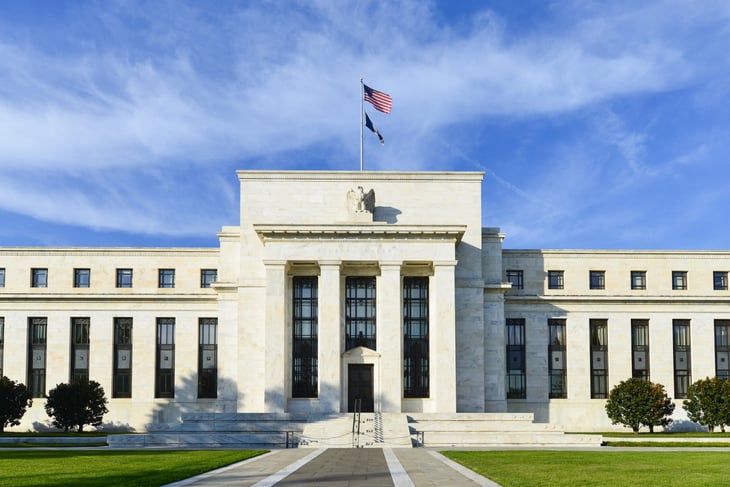
Editor's Note: This story originally appeared on NewRetirement.
First, before reading this article, know that there are solutions to every economic problem – at both the personal and macro-economic levels. So, even as stagflation looms, it doesn’t mean that you’ll never be able to retire or run out of money if you do.
But, being forewarned is being fair armed. And stagflation is a possible future problem.
What is it? How could it impact your future financial security? Let’s find out.
What is Stagflation?

Stagflation is a combination of two pretty terrible economic concepts: stagnation and inflation. Okay, but what do those terms mean exactly? Let’s talk about each one separately.
Stagnation

Stagnation is when economic growth – an increase in the output of goods and services – slows. This trend triggers high unemployment.
Inflation

Inflation is when the prices for goods and services rise.
Inflation has been steady for decades, holding at around 2%, which is a “desirable” level of price increases. However, supply chain issues from the pandemic are making goods more expensive.
And the war in Ukraine is causing disruptions in energy and food supply. These factors conspire to make prices rise.
Stagflation is Not a Foregone Conclusion

So, stagflation is a phenomenon where there is little or no economic growth and high unemployment at a time when prices are high. This combination of factors can cause rather severe economic hardship for households.
The term first came to use in the 1970s.
We are not definitely headed toward stagflation. It is not a foregone conclusion and many economists believe that stagflation is actually an unlikely scenario.
We are currently experiencing almost full employment. Jobs are plentiful. If anything, businesses are having a difficult time finding workers.
Most experts agree that curbing inflation, specifically mitigating problems arising from the gas and oil crunch as well as supply chain issues, are key to our future stability.
There is still time to maneuver our way around stagflation.
Stagflation is Hard to Fix

Traditionally, the job of fixing inflation (and stagnation) has largely been the responsibility of the Federal Reserve.
However, the tools that the Fed can use to fix inflation (raising interest rates to slow demand) can exacerbate stagnation. And the ways to fix stagnation (lower interest rates to help businesses grow) can make wages rise and worsen inflation.
Consumer and business sentiment, interest rates, investments, the job market, borrowing, consumer demand, spending, and what things cost are some of the factors swirling in the vortex of stagflation.
“The only known remedy for stagflation is a recession,” said David Wilcox, a senior economist at the Peterson Institute for International Economics and Bloomberg Economics. (Um, that’s not good. A recession is when the economy contracts.)
Stagflation Can Be a Self-Fulfilling Prophecy

The real long term problem with stagflation is that as households and businesses struggle and worry about the future, they reduce spending and investment. This economic contraction only serves to perpetuate stagflation.
Just as it is difficult for regulators to manage stagflation, it is also difficult for individual households. The key may be to focus on flexibility in all aspects of your finances: income, investing, spending and attitude.
The economy and your approach to your money is not always an art. It is not always a science. In many ways it is most often an emotion.
Emotions like confidence and attitudes like optimism have a huge impact on how the economy performs. If you feel good about your economic prospects, you are probably spending more money and making investments. If you are worried, you tighten the purse strings.
It is important to be prudent. Look for the good and for opportunities.
Be Flexible with Your Savings and Investments

It is probably best to assess your asset allocation and make sure you have a diverse portfolio to prepare for stagflation or whatever economic twists and turns our future brings.
Some people recommend that you have extra cash on hand for stagflation. Others suggest value investments (stock in companies with strong underlying fundamentals). Investments in things with real values like commodities and real estate is another approach.
Income-producing investments may also be a good option. I-Bonds have proven particularly popular. Bond ladders and fixed annuities (with inflation protection) can also guarantee returns.
Finally, some experts suggest you look at a barbell approach where you focus on both very safe and relatively risky investments, avoiding middle-of-the-road options.
Be Flexible with Your Spending

Cutting costs is a common response to inflation, stagnation, job loss, and stagflation. However, as explained above, cutting costs can perpetuate stagflation.
Adopting a flexible approach to your spending, cutting discretionary costs when necessary and spending when possible is probably the best approach. Stay on top of your budget. Monitor your costs and adjust as required.
Look for More Flexible Income Sources

Whether you are already retired or still working, preparing for stagflation may involve looking for ways to diversify your income streams.
Passive income streams may prove particularly useful. Seeking gig or part-time work is another approach. Working longer and delaying retirement for a bit may be a pragmatic solution.
Run Stagflation Scenarios In Your Plan

While we don’t know what the future holds, you can run “what if” scenarios to assess your own personal financial security in a variety of possible economic conditions. Some things to consider:
- Try increasing your assumptions for inflation.
- See what happens if you lose income.
- Assess different asset allocation options (changing rates of return to reflect your “what if” portfolio).
- What impact does cutting costs have?




Add a Comment
Our Policy: We welcome relevant and respectful comments in order to foster healthy and informative discussions. All other comments may be removed. Comments with links are automatically held for moderation.